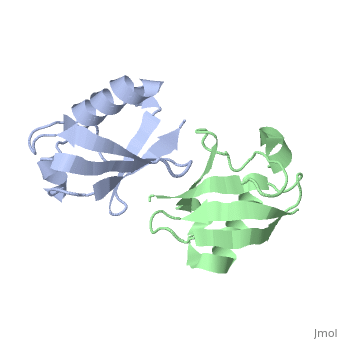Molecular Playground/Ubiquitin salt bridge discussion
From Proteopedia
(Difference between revisions)
| Line 6: | Line 6: | ||
Once we have one electron based dissociation pattern of ubiquitin, which in real world does not either break any salt bridge above. For reference, ubiquitin's sequence is below: | Once we have one electron based dissociation pattern of ubiquitin, which in real world does not either break any salt bridge above. For reference, ubiquitin's sequence is below: | ||
| - | + | MQIFVKTLTGKTITLEVEPSDTIENVKAKIQDKEGIPPDQQRLIFAGKQLEDGRTLSDYNIQKESTLHLVLRLRGG | |
| - | + | ||
From this particular sequence, there are 11 D and Es as well as 11 R and Ks. Imagine how many possibile salt bridge patterns if all those residues formed randomly. Based on the electron dissociation data, we can eliminate those pattern inside which salt bridges are broken. so, we can get the number of possible or reasonable patterns. Here it is, only 1 percent of the millions of possibilities go into the team of "preserving the salt bridge". This result also supports the statement that protein can stay native when ESIed into gas phase which is so important aspect for analyst who works on mass spectrometry. | From this particular sequence, there are 11 D and Es as well as 11 R and Ks. Imagine how many possibile salt bridge patterns if all those residues formed randomly. Based on the electron dissociation data, we can eliminate those pattern inside which salt bridges are broken. so, we can get the number of possible or reasonable patterns. Here it is, only 1 percent of the millions of possibilities go into the team of "preserving the salt bridge". This result also supports the statement that protein can stay native when ESIed into gas phase which is so important aspect for analyst who works on mass spectrometry. | ||
Current revision
| |||||||||||
To see the ubiquitin PDB of 2jzz please click .

